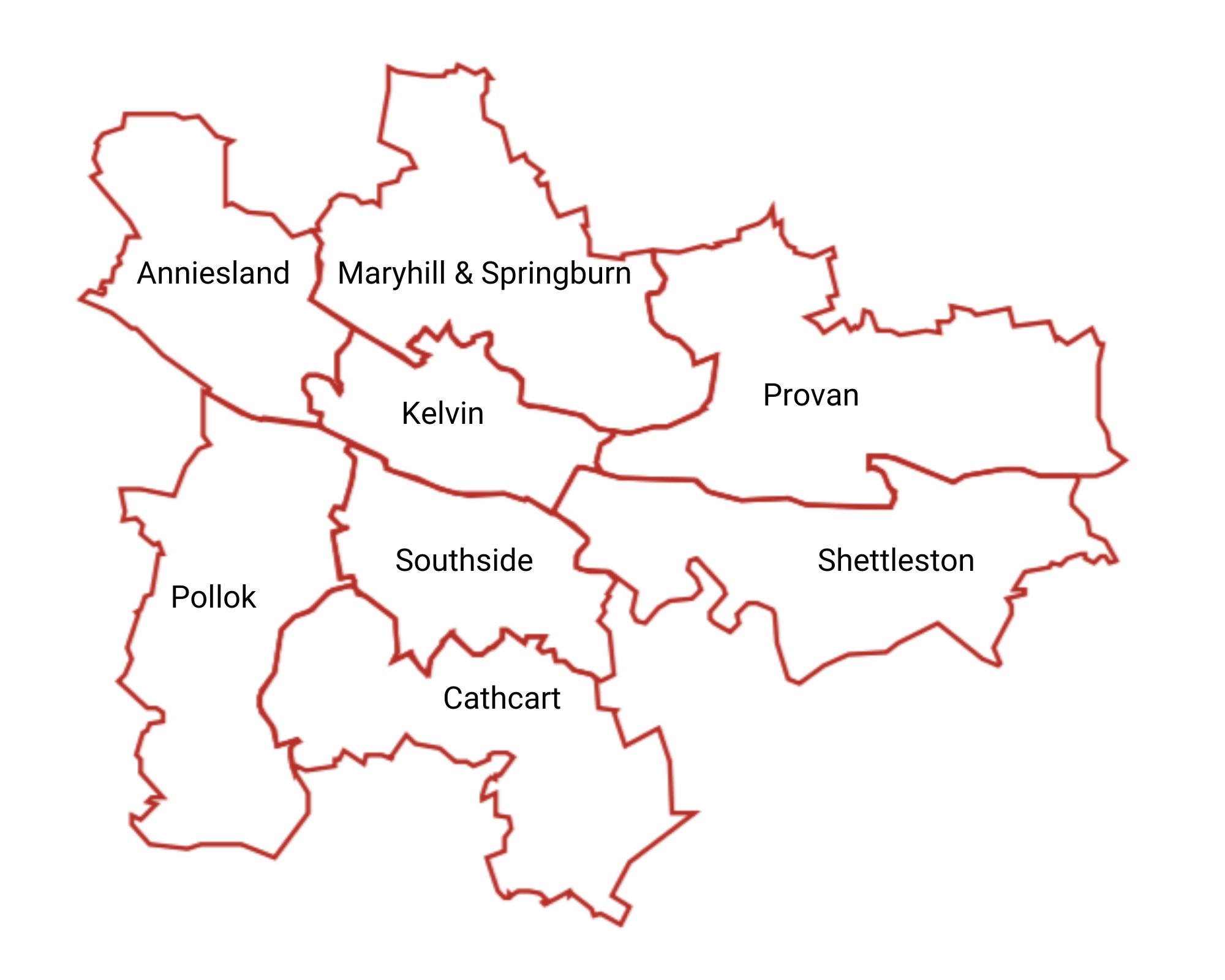A Snapshot
The Snapshot is an ongoing research project for GCHT which gathers a city-wide perspective of Glasgow’s built historic environment. The aim is to provide a baseline of information, together in one place, to help provoke discussion, illustrate trends and inform decision making.
A huge amount of information already exists, collected at different scales and times and kept in different places by different organisations. This page brings some of that information together into one place, allowing for a more cohesive view of what’s going on.
As well as historic building data points, such as listed and at-risk buildings, we have included broader social, environmental and political information, such as the Scottish Index of Multiple Deprivation, incidents of fire and constancy boundaries.
This follows on from the original Snapshot reports GCHT produced in 2018 and 2019, as part of our Historic Built Environment Forums, which brought together stakeholders across the city to discuss the challenges and opportunities facing Glasgow’s built heritage. These previous reports can be read here.
By creating a dedicated webpage to the Snapshot, we hope to be able to continue to respond directly to trends and information about the city’s historic environment as it’s made available. We also hope it allows us to provide resources and discussion points based on feedback from our different audiences.
We mined data from open sources, such as the national census and household surveys. Under “Data Sources” you’ll find information about the data sources we used, including links.
Data Sources
- Buildings at Risk data for Glasgow comes from Historic Environment Scotland and is correct as of June 2021.
- Scottish Index of Multiple Deprivation (SIMD) data is the latest available (2020). It can be explored in more detail on the SIMD website.
- Listed buildings data is the latest available data (September 2020). Contains Historic Environment Scotland and Ordnance Survey data © Historic Environment Scotland
- Fire incident data comes from the Scottish Fire and Rescue Service, and is for 2019-20.
- Vacant and Derelict Land data is the latest publicly available (2017). You can find maps [PDF] on the Scottish Government Website, and the latest committee report from Glasgow City Council about Vacant and Derelict Land on their website.
- Vacant commercial properties data comes from an FOI request to Glasgow City Council in February 2019.
- Empty Homes data comes from an FOI request to Glasgow City Council in 2016.
- Data on age of housing comes from Home Reports data. Home Reports only exist where a dwelling is bought / sold, so coverage varies by area. Figures should be taken as an indication only.
- Tenure data comes from the Scottish Census, the last of which was in 2011.
Results of the 2022 Historic Environment Survey
Over the spring of 2022 GCHT launched a public survey on perspectives towards Glasgow’s built heritage, receiving just under 500 response from members of the public to eight questions on Glasgow’s urban landscape. Click below to see the results of the survey and to find out more about how the people who live and work in Glasgow feel about the city’s historic built environment.
Interactive Map
Our interactive map brings together a range of data points that affect the city’s historic built environment. The map can be zoomed in and out to get a localised or city-wide perspective, giving you an idea of the current state of the city’s built heritage, as well as other influential social, environmental and political factors
Neighbourhood Profiles
The Neighbourhood Profiles give a condensed summary of some of the major statistics for Glasgow’s historic built environment, organised by the city’s eight MSP constituencies. Each Profile can be read on its own, or you can read across the different Profiles to gain an insight into how different parts of the city compare.

Total Population: 74,762
Buildings on the At-Risk Register: 4
Conservation Areas:
Broomhill
Scotstoun
Victoria Park
Total Number of Listed Buildings: 112
A Listed: 13
B Listed: 64
C Listed: 35
Total Population: 74,913
Buildings on the At-Risk Register: 8
Conservation Areas:
Carmunnock
Millbrae
Newlands
Pollok Park
Shawlands Cross
Snuffmill
Total Number of Listed Buildings: 222
A Listed: 30
B Listed: 129
C Listed: 63
Total Population: 93,759
Buildings on the At-Risk Register: 42
Conservation Areas:
Broomhill
Central
Glasgow West
Park
St Vincent Crescent
Woodlands
Total Number of Listed Buildings: 2,952
A Listed: 588
B Listed: 2,078
C Listed: 286
Total Population: 71,822
Buildings on the At-Risk Register: 13
Conservation Areas: Glasgow West
Total Number of Listed Buildings: 237
A Listed: 50
B Listed: 131
C Listed: 56
Total Population: 80,473
Buildings on the At-Risk Register: 5
Conservation Areas:
Govan
Pollok Park
Total Number of Listed Buildings: 83
A Listed: 6
B Listed: 55
C Listed: 22
Total Population: 76,115
Buildings on the At-Risk Register: 12
Conservation Areas:
Central
Dennistoun
Total Number of Listed Buildings: 108
A Listed: 16
B Listed: 74
C Listed: 18
Total Population: 79,020
Buildings on the At-Risk Register: 14
Conservation Areas:
Central
Bridgeton Cross
Parkhead Cross
Total Number of Listed Buildings: 206
A Listed: 20
B Listed: 137
C Listed: 49
Total Population: 70,336
Buildings on the At-Risk Register: 25
Conservation Areas:
Central
Crosshill
Dumbreck
Hazelwood
East Pollokshields
Shawlands Cross
Strathbungo
Walmer Crescent
West Pollokshields
Total Number of Listed Buildings: 749
A Listed: 67
B Listed: 589
C Listed: 93
